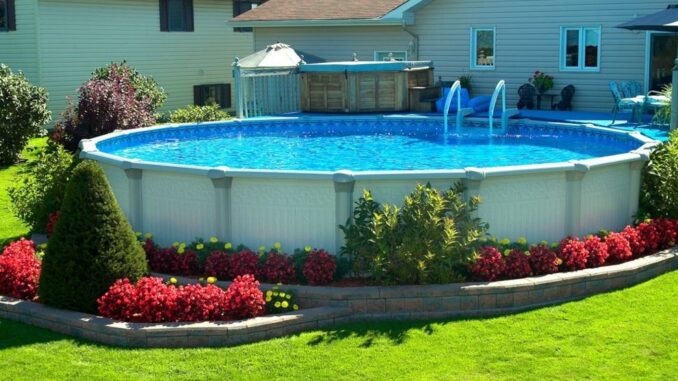
Is the water in your above-ground pool murky? Are strange noises coming from it? These are some of the most obvious signs your pool desperately needs maintenance.
The filtration system, ladder, and pump must be cleaned and maintained on a regular basis to ensure optimal water quality. Each filtration system has its own requirements when it comes to cleaning, which you should adhere to.
The tips below will teach you everything you need to know about maintaining above-ground swimming pool equipment.
Cleaning the filtration system
In order to maintain your filtration system properly, you need to ensure the pressure gauge runs optimally, as well as monitor the pressure levels. The pressure gauge reveals the PSI (pounds per square inch), which is approximately 10 PSI. When PSI is higher than the normal range, it means the filters have to be backwashed or cleaned. Read more about the magnitude and conversions of the pounds per square inch unit.
When cleaning cartridge filtration systems, individuals are supposed to switch the pump off and relieve the pressure that has accumulated inside the filter. Make sure to turn the air relief valve in a clockwise direction until the pressure on the gauge is reduced to 0 PSI. Afterward, move on to removing the filter cartridge and placing it somewhere on your lawn.
Additionally, use a garden hose with a full-spray nozzle to spray the cartridge from top to bottom. Pay special attention to the lower part of the filter, as the largest part of debris tends to accumulate in this part. After cleaning it, the filter should be put back in its previous position, the pump turned on, but the air relief valve still open. Once the water starts spraying, it’s time to close the valve.
When backwashing a sand filter, the first step is locating the circuit breaker and turning the pump off. The handle of the valve should be turned until it points to the backwash setting. Make sure the backwash hose is secured to the valve, switch on the pump, and leave it on for as long as two minutes. Following the backwash process, the valve must be turned to the rinse setting and left to run for about one minute.

The backwash procedure for DE filters requires individuals to purchase DE powder so as to replace the powder that gets removed in the course of cleaning. When looking for above-ground swimming pool equipment like filter systems, make sure they offer simple maintenance. Before cleaning DE filters, the pump should be turned off while switching to another mode in order to prevent spider gasket damage.
Moreover, the handle should be rotated to backwash, after which the pump is supposed to be switched back on. The backwash cycle should last between two and three minutes so as to remove all contaminants. Following the cleaning, choose the rinse cycle to eliminate even the most stubborn contaminants. The final step involves adding the new powder.
Ladder cleaning
In order for individuals to clean their pool ladders, they must remove them first. After removing the ladder successfully, you are advised to disassemble it to clean it more easily. It’s important to use a plastic pad and a cleaning solution that dissolves rust. After eliminating all dirt and rust, don’t forget to rinse with water. Harsh chemicals shouldn’t be used to prevent damage to the ladder material.
To maintain the shiny look of pool ladders for a longer period, some car wax will provide the necessary protection. Such protection is required to prevent damage from the weather elements, especially prior to closing up the pool for the winter period.
Pump maintenance
The pump is undeniably the heart of above-ground pools, which is why it has to be serviced regularly. It should be periodically lubricated to prevent failure. Nevertheless, the motor has to be kept dry and ventilated to operate normally. In the event of using a cover to protect your pool pump, always make sure there is sufficient airflow around it for the motor not to overheat.
Additionally, the internal mechanics of the pump should be cleaned with a tiny brush and wiped with a damp cloth. In terms of shelter, select one that provides protection against rot and rust. You can choose a pump box or a shelter cover, depending on your available space. The following link, https://www.wikihow.com/Clean-Above-Ground-Pool, includes some useful tips for cleaning an above-ground pool.
No matter which shelter you choose, there is supposed to be plentiful ventilation. The chemicals inside the pool should come in no contact with the pump to reduce the risk of motor corrosion.
Final thoughts
Pool maintenance is of absolute essence for the health of bathers and the longevity of the entire system.
Spare some time for it when necessary!
